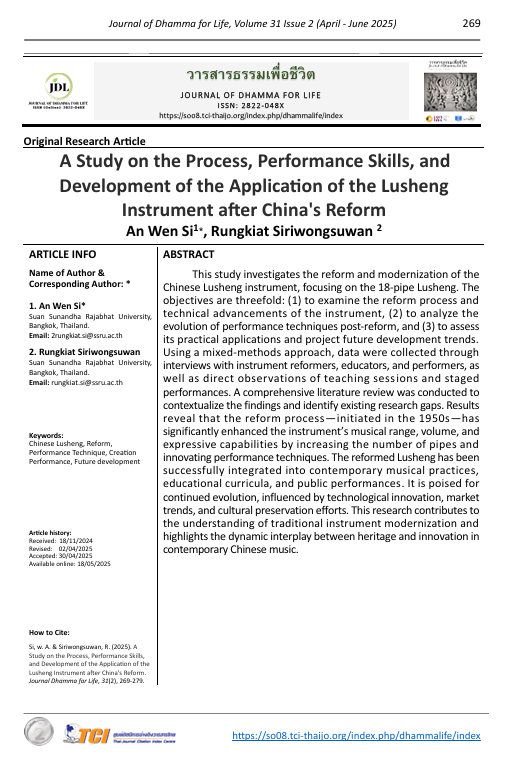A Study on the Process, Performance Skills, and Development of the Application of the Lusheng Instrument after China's Reform
Main Article Content
Abstract
This study investigates the reform and modernization of the Chinese Lusheng instrument, focusing on the 18-pipe Lusheng. The objectives are threefold: (1) to examine the reform process and technical advancements of the instrument, (2) to analyze the evolution of performance techniques post-reform, and (3) to assess its practical applications and project future development trends. Using a mixed-methods approach, data were collected through interviews with instrument reformers, educators, and performers, as well as direct observations of teaching sessions and staged performances. A comprehensive literature review was conducted to contextualize the findings and identify existing research gaps. Results reveal that the reform process—initiated in the 1950s—has significantly enhanced the instrument’s musical range, volume, and expressive capabilities by increasing the number of pipes and innovating performance techniques. The reformed Lusheng has been successfully integrated into contemporary musical practices, educational curricula, and public performances. It is poised for continued evolution, influenced by technological innovation, market trends, and cultural preservation efforts. This research contributes to the understanding of traditional instrument modernization and highlights the dynamic interplay between heritage and innovation in contemporary Chinese music.


